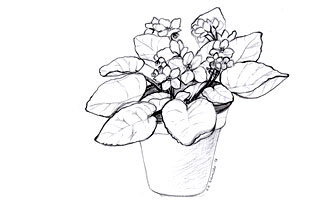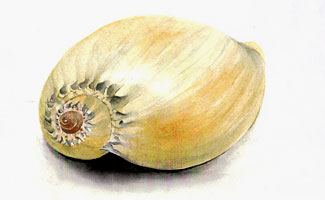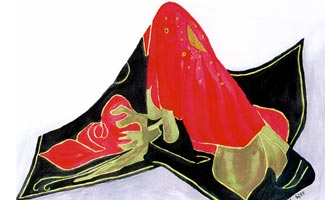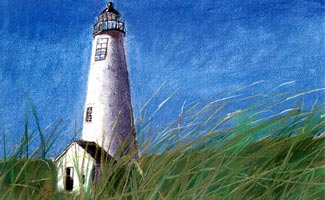 |
|||||||||
 During weekdays, Hui-Ling gives drawing and painting lessons in her home studio. Each beginner is taught the basic and easy-to-learn techniques of realistic drawing. They are exposed to different media and are gradually led into different subject matter. In a very short time, students learn to paint watercolor landscapes and pastel portraits. This process of learning to paint expands the students' capacity to see and intensifies their enjoyment of looking in their daily lives. Each student is encouraged to find his/her personal style and direction. Some of them go on experimenting with acrylic and oil paints, exploring abstract, non-figurative painting. They appreciate their own individuality and earn the respect of their fellow students. There are morning, afternoon and evening classes. If you are a beginner, Hui-Ling will lead you into the wonderful world of drawing and painting. If you are an experienced painter already, Hui-Ling will help you find your own direction and widen your realm of expression. You can also join a group of artists to paint out of doors or in a local museum or gallery. 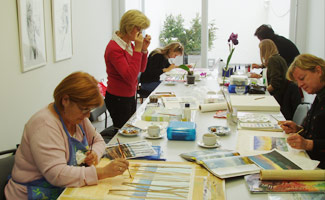
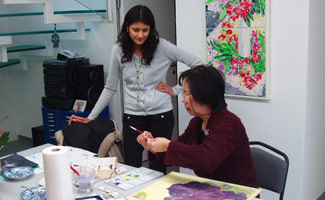 You Too Can Discover Your Artistic Side written by Julia Newton When one of the students at Hui-Ling Mavroidis's art class first joined the group, she threw down a challenge: if you can get me to paint then anyone can do it! A year later, she's producing wonderful watercolours. Every Friday morning, you can hear the silence as a small group of like-minded ladies work on their pastels, watercolours and ink drawings. Everyone learns and builds on the same series of techniques; starting with a pencil sketch of a flower, moving on to coloured pencils, life-like pastel drawings of fruit and vegetables, watercolour tulips and sunflowers and landscapes from photos or real life. We learn about texture, shading, background, negative space and how to paint transparent objects. The trick is to 'see' the object with the right brain, not as a flower or a leaf but merely a shape. Using a frame for guidance, we record the shape onto paper, then go on to add colour and shading. Hui-Ling tends to our creature comforts with coffee and cakes, while we concentrate on developing our works of art. After the usual exchange of moans about the weather, the kids' health and even, heaven forbid, a less than sympathetic husband or teacher, silence descends and you could hear a pin drop. The three hours go by so quickly, with Hui-Ling helping us through those moments of panic when we feel like giving up, and at the end of the morning, we have produced a colourful array of creditable or even beautiful works. After less than a year, we were designing and printing our own Christmas cards, transforming our favourite view into a watercolour landscape and recreating glass jugs, shiny spoons and ornate vases into life-like ink drawings or delicate paintings. Not only is art in the Mavroidis school rewarding, it also creates an oasis of calm in the hectic week and has even proved to lower the blood pressure! With our teacher's words of encouragement, 'Very nice; now add more texture like this', we can all produce a piece to be proud of, even one which will impress the family. And if doubt sets in, as it frequently does, we may remember these words by Robert Hughes, 'The greater the artist, the greater the doubt; perfect confidence is granted to the less talented as a consolation prize'. So through uncertainty, we can all aspire to greatness. Hui-Ling's classes, which also cover more advanced techniques such as oil and acrylic paints, take place at her Rueschlikon studio on Tuesdays, Wednesdays, Fridays and Saturdays. Get in touch now for a weekly dose of art therapy. |
|
| Student
Works/Exercises |
Beginners' Course Plan Session 1 - Pencil Drawing of Flowers and Leaves We will learn about the shift of thoughts from the left to the right side of the brain, and what/how to see while drawing. Learning how to use the "viewfinder" awareness of somposition on page. Detailed instruction on the use of pencils and the shading of various tones etc. Session 2 - Ink Drawing of Man-made Object We will learn to see and draw the "negative space", the techniques of sighting, use of ink, the importance of composition, and the innovative use of geometric forms. Session 3 - Pastel Painting of Fruits and Vegetables We will learn about the nature of colours, the techniques of creating a three-dimentional form with pastels, how to mix colours and the nature of shadows. Session 4 - Self Portrait Using Pencils We'll learn to see and draw the various parts of the face in proportional relation to one another as well as the whole of the face. Session 5 - Watercolour Painting of a Plant We'll learn the techniques and joy of using watercolour, while becoming familiar with the "wet on wet" and "wet on dry" techniques. Session 6 - Portrait using Pastels We'll paint the profile of a fellow artist using pastels. Light and shadow will be emphasized, as will be an understanding of the bone and muscle structure under the skin that gives form to the head and facial features. Session 7 - Painting of a Seashell using a Combination of Pastels and Watercolour We'll be learning how to make a detailed rendering of natural forms. The goal will be capturing the essence of the textures and shapes. Session 8 - Mixed Media Painting of Transparent or Metal man-made Objects We'll be learning how to render varying surfaces, in particular in terms of shadow and reflecting light quality. Session 9 - Landscape using Watercolour We will indulge in the rendering of our favourite natural landscapes using one of the most versatile mediums for this aim. Session 10 - Self-defined Projects, or Abstract Painting Combining all Techniques and Materials The goal of this last project is to find one's favourite form of self-expression, and to put to work all the knowledge of drawing and painting thus far learned. 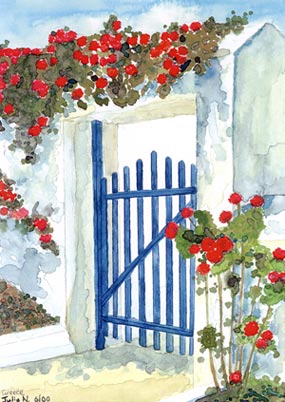
|
© 2014 Hui-Ling Mavroidis
